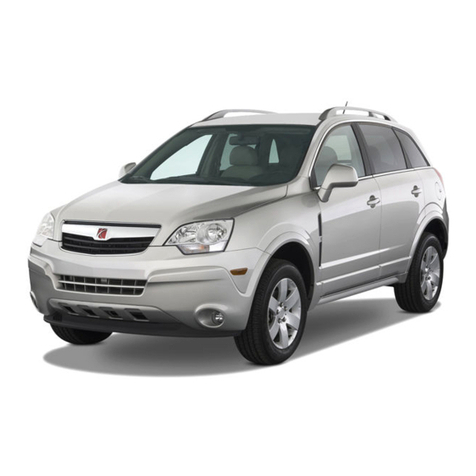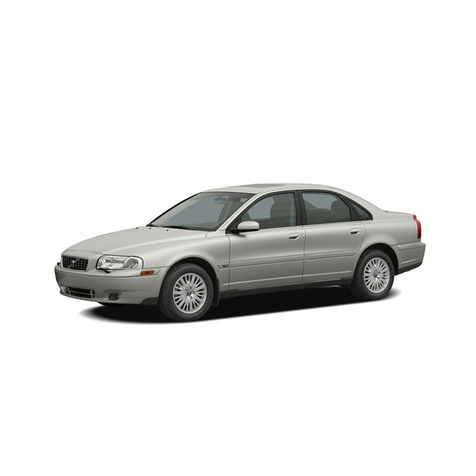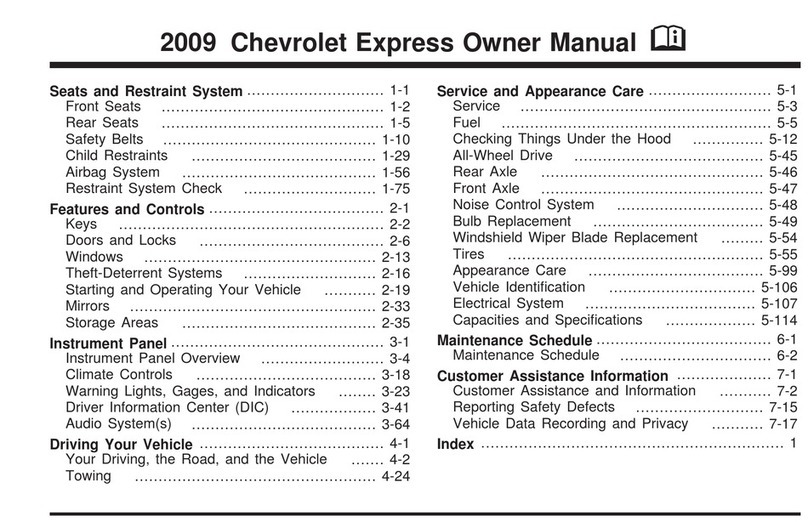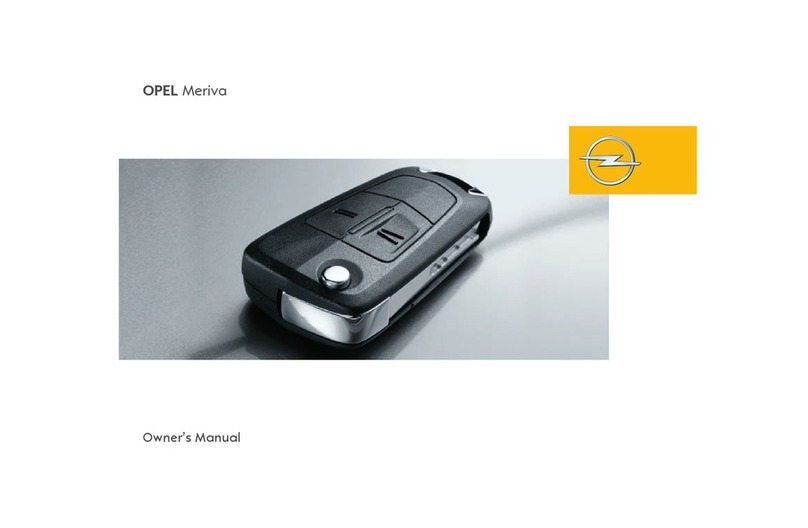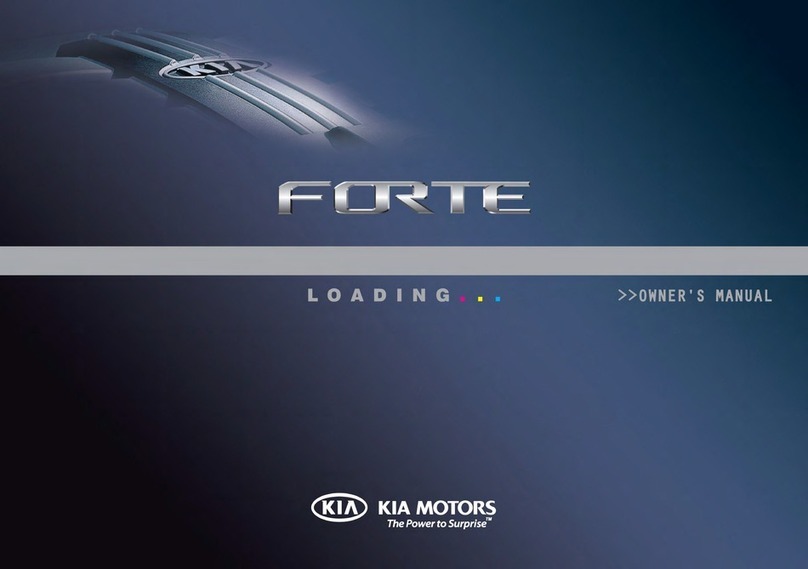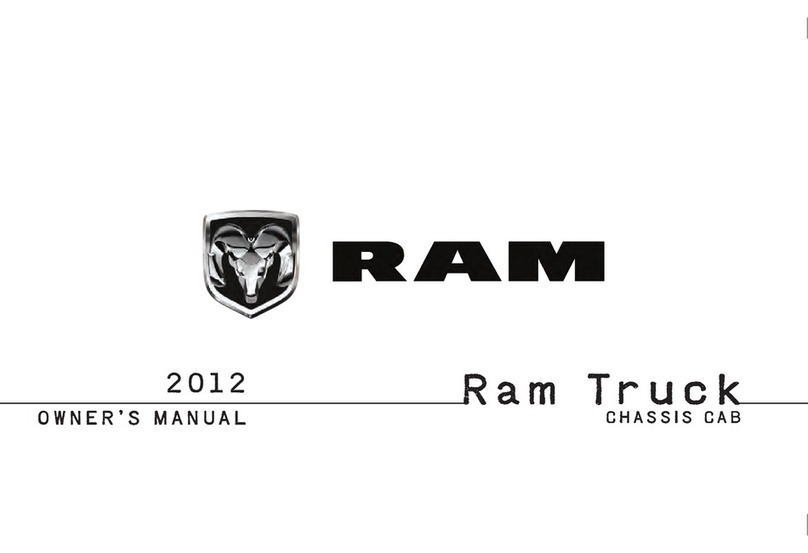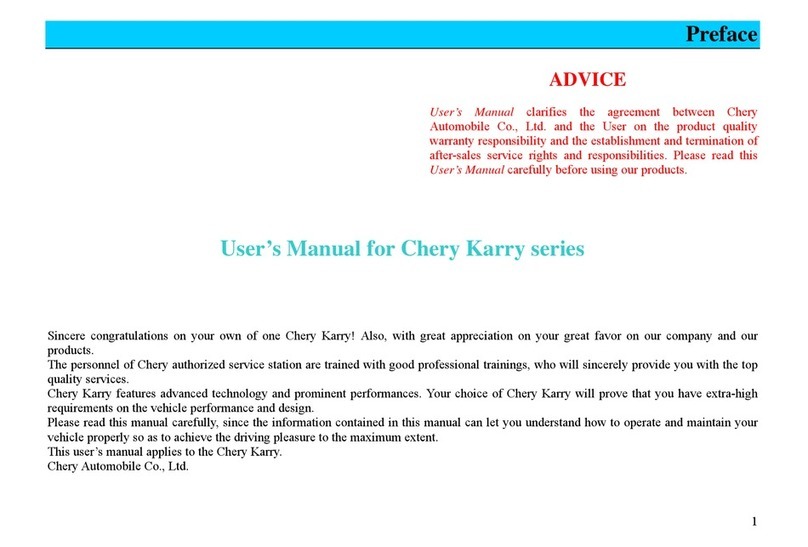Rolls-Royce Silver Shadow Instruction manual

Workshop Manual
Rolls-Royce Silver Shadow
(including Long Wheelbase Saloon)
Rolls-Royce Corniche
Bentley
T
Series
and Bentley Corniche
Up
to
and including car serial number
30000
Volume
2

Printed and Published by
Rolls-Royce Motor Cars Limited
Crewe Cheshire
CWI 3PL England
This manual is a reprint of the original. Whilst
the information is given in good faith Rolls-Royce
Motor Cars Limited gives no warranty or
representation concerningthe information and
such information must not be taken as forming
part of or establishingany contractualor other
commitment by Rolls-Royce Motor Cars Limited
@
Rolls-Royce Limited
1965
Reprinted by Rolls-Royce Motor Cars Limited
1988

Chapter
J
THE FINAL DRIVE
(Comprising The Final Drive Unit, Half-shafts,
Final Drive Crossmember and Rear Hubs)
SECTION PAGE
c
J1
The Final Drive Unit
J1
J2
The Final Drive Half-shafts
J13
J3
The Final Drive Crossmember
J19
J4
The Rear Hubs, Stub Axles and Drive-shafts
J21
J5
Dimensional Data
J25


Rolls-Ioyce Silver
Shadow
B
Bentley
T
Series
worksho~
Manual
Chapter
J
THE
FINAL
DRIVE
Section
J1
Final drive unit-To remove
1.
Place the car on a ramp and secureIy chock the
road wheels.
THE
FINAL
DRIVE
UNIT
2.
Disconnect the battery, located in the boot.
3.
Remove the drain plug from the final drive
casing and allow the lubricant to drain into a clean
container. Slacken the filler plug to speedup draining
operation. It is advisable to carry out this operation
when the unit is warm, immediately after the car has
completed a run. After draining, clean and fit the
drain plug with
a
new aluminium washer.
4.
Remove the pinch bolts from the mounts
supporting the rear section of the exhaust system;
support the pipe and remove the clamp bolts from the
joint clamp. Separatethejoint and remove theexhaust
system rear section.
5.
Disconnect the propeller shaft from the differen-
tial pinion flange by removing the four bolts and nuts.
6.
Disconnect the half-shaft outer universal joints
from the hubs by removing the eight clamping set-
screws; remove the four clamps. To uncouple the
joints ease the half-shafts inwards.
0
verhaul
Note
To
perform Operations
5
and
6
it may
be necessary to jack up a rear wheel and
rotate it in order to gain access to all the
necessary nuts and bolts.
7.
Support the half-shafts to prevent excessive
strain being imposed on the neoprene seals of the ball
and trunnion joint. Place hardwood block beneath
trailingarm, asnear to the hub as possible, to prevent
excessive strain being imposed on the rebound straps.
8.
Place ajack under thefinaldrivecasingtosupport
it.
9.
Release the torque arm front mount from the
rear suspension sub-frame by removing the two lower
bolts and nuts which secure the torque arm flange
to
the mount lower support plate
(see
Fig.
513).
10.
Remove the sixteen nuts and washers securing
the final drive unit to the cross-member noting the
position of the eight special interlocking washers.
Support the half-shafts, ease the final drive unit away
from the cross-memberand lower it from the car.
Note
If the final drive unit is not to be dis-
mantled, fit and tighten the four rear
cover retaining nuts and washers adjacent
to the two dowels.

Workshop
Manual
Rolls h'oyce Silver Shadow
&
Bentley
T
Series
Chapter
J
5.
Remove the nuts and washers from the bearing
cap on each side of the crown wheel and differential
assembly (see
Fig.
J3).
6.
Remove the two bearing caps, and lift the crown
wheel and differentialassembly from the casing.
Note (a) The crown wheel and differential
assembly cannot be lifted directly our of
the final drive casing, but must be re-
moved by lifting the crown wheel slightly,
then moved away from the pinion and
carefully past the pinion nose bearing
bridge.
(b) Precautions should be taken during
Operation
5
to ensure that the two large
taper roller bearing tracks do not fall off,
as this could result in damage to the
rollers or tracks.
7.
Remove the four setscrews which secure the
pinion housing to the front flange of the casing and
insert
extractor screws into the two tapped holes in
FIG.
J1
FINAL DRIVE UNIT-IN POSITION
the pinion housing flange.
8.
Place the casingin an oven having a temperature
1
Rear suspension sub-frame of approximately 80°C (176"F)for approximately one
2
Torque arm front mount hour.
3
Transmission damper
4
Modified exhaust swirl chamber
9.
Remove the casing from the oven and extract
5
Final drive unit the pinion housing using the two extractor screws,
taking care to turn the screws evenly and together.
6
Final drivedrain plug
7
Final drive cross-member
8
Torque arm
9
Ball and trunnion joint
10
Convoluted seal
10. Remove the two socket headed screws, the two
retaining nuts and washers, and remove the pinion
nose bearing.
Crown wheel and differential assembly-
To dismantle
Final drive unit-To dismantle
1.
Remove the bearing outer tracks.
It should
be
noted that exchange final drive units, less
half-shafts, are available for Service replacements.
It must be noted also that crown wheel and pinion
gears
are supplied as lapped pairs and as such, they
must
not be separated or fitted independently.
1.
Carry
out Operations
1
to
10,
inclusive, of 'Final
driveunit-To remove'.
2.
Remove the right-hand half-shaft assembly,
remove the distance piece, and the three belleville
washersandadjustingwasher frombehindthehousing.
3.
Remove the left-hand half-shaft assembly and
remove the large adjusting washers
fitted
between the
housing and the large crown wheel bearing.
4.
Remove the large cover from the rear of the
housing.
2.
Remove the twenty nuts, washers and bolts
securing the crown wheel to the differential housing;
remove the crown wheel.
3.
Unlock
and remove the eight setscrews securing
the differential housing end cap; remove the cap,
splined pinion gear and adjustingwasher.
4. Remove the nut and long setscrew which runs
through the centre of the split trunnion pin; remove
the trunnion pins, bevel gears and dished thrust
washers (see
Fig.
52).
5.
Remove the splined pinion gear and adjusting
washer from the other end of the housing.
Note
All wsshers should be attached to their
appropriate gears to ensure that they are
fitted in their original positions.

Rolls-R~i.;"eSi/verShadow
&
Bentley
T
Series
Mhk~h0p
Manual
If it is necessary to renew the large taper roller
bearings, they should be pressed off the differential
housing and end
cap.
6.
Wash all parts thoroughly and
dry
with
com-
pressed
air.
7.
Thoroughly inspect
all
components for wear
or
damage marks and renew any defective items. The
adjuat&g washers, excluding the dishedthrust washers
behind the bevel
gears,
should
all
be
flat and parallel.
Ensure that all bearing surfaces and bores are
free
from damage, pitting or burrs and that all gears are
free
from damage or excessive wear.
Crown wheel and differentialassembly-
To
assemble
Repare the washed and inspected parts, complete
with
any new or replacement parts, for assembly
which is a careful reversal of the dismantling pro-
cedure as follows
:
1.
If
new taper roller bearings are to be fitted, they
must be pressed squarely on to the diameters on the
end of the differential housing and end cap noting
that, the larger of the two bearings is fitted to the
housing and that both bearings are fitted correctly
against their abutment faces
(see
Fig.
J9).
2.
If
the adjusting washer positions are not known
or
if
new pieces arebeingfittedthefollowingprecedure
is
recommended for assembling the differential hous-
ing asdescribed in Operations
3
to
6
inclusive.
3.
Fit the sphed bevel pinion into the end of the
08
differential housing without an adjusting washer
J
behind the head.
a
Chapter
J
FIG.
53
OIFFERENTIAL HOUSING AND CROWN
WHEEL IN POSITION
4.
Fit the trunnion pins, dished washers and bevel
gears; the long bolt and nut which connects the split
trunnion pin should
be
torque tightened to between
8
lb. ft. and
10
Ib.
ft.
(410
kg.m. and 1,38 kg-m.).
5.
Push the splined pinion gear into mesh with the
bevel gears
as
far as possible and measurethe distance
from the end of the differential housing to the end
face
of the bevel gears.
FIG.
52
DIFFERENTIAL HOUSING-EXPLODED VIEW
1
Differential gear housing
5
Adjusting washer
9
Split trunnion pin
2
Splined bevel pinion
6
Differential housing end cap
10
Differential gears
3
Trunnion pin
7
Taper roller bearing
11
Adjusting washer
4
Dished thrust washer
8
Splined bevel pinion
12
Taper roller bearing

Workshop
Manual
Rolls Royce
Silver
Shadow
b
Bentlev
i
Series
6.
Pull
the gear bask out of mesh as far as possible
and again measure from the end of the housing to the
end of the gear (see
Fig.
J4).
The difference between these two measurements
will
give the nominal size of adjusting washer required
behind the gear head.
7.
Dismantle the gears and then assemble them
with the correct adjusting washer fitted behind the
bevel pinion.
Adjusting washers are available in a range from
0.084 in. to 0.116 in.
(2,13
mm.
to
2,94
mm.)
in
0.002
in. (0,05
mm.)
increments and they must be fitted with
the chamfer and the oil grooves against the back face
of the gear.
8.
Rotate the gears to ensure that they are perfectly
free, but without backlash, if necessary vary the
thickness of the adjusting washer.
FIG.
J4
SPUNED BEVEL PINION MEASUREMENT
1
Micrometer
2
Differential gear housing
3
Splined bevel pinion
ILL
FIG.
55
CHECKING THE CROWN WHEEL
FOR
TRUTH
1
Dial test indicator
2
Crown wheel and differentialhousing assembly
3
Adjusting washer
4
Adjustingwasher
9.
Fit the housing end cap and the other splined
bevel pinion and repeat Operations 3 to
7,
inclusive,
to determine the thickness of the adjusting washer
required.
Note
When the unit is assembled correctly the
gears should
run
freely without tight
spots and without backlash.
10. When the differentialgears
are
correctlyset, lock
the setscrews securing the differential housing end
cover
by
turning over the washer tabs.
11. Fit the crown wheel to the end of the housing
and torque tighten the setscrews to the standard
figures relative to size (see Chapter
P).
12.
Check the crown wheel for axial run-out.
Any convenient method may
be
employed to check
this, e.g. on a mandrel between the centres, but one
method which may be used is described in Operations
12
to 14, inclusive.
13. Place the roller bearing outer tracks in position,
and stand the assembly on one end in a press with an
adjusting washer fitted to each bearing (see
Fig.
J5).
14. Apply light pressure and, using
a
dial test indi-
cator, check the run-out of the crown wheel; the
run-out should not exceed
0.002
in.
(0,05
mm.).
15.
If
the run-out exceeds this figure different crown
wheel positions relative to the differential housing
should
be
tried until the run-out is within &he
0.002
in.
(0,05
mm.)
limit.
Pinion housing-To dismantle
1. Remove and discard the
'0'
ring fitted to the
pinion housing.
2.
Unlock and remove the nut securing the pinion
flange and damper; remove the flange using the

Rolls-Royce Silver
Shadow
B
Bentley
T
Series
Workshop
Manus/
special hydraulic ram
(RH
8017) and special extrac-
tor beam (RH 8033).
3. Remove the pinion oil seal and the oil flinger
fitted behind it.
4.
Place the housing in a press
with
the
pinion
gear downward and the housing lower end firmly
supported and carefully press the pinion out of the
housing.
5. Collect the adjusting washers from the pinion
shank and the taper roller bearing from the housing.
6.
If new taper roller bearings are to be fitted, the
outer tracks must be removed from the housing,
using a soft drift and a hammer, taking
care
to avoid
damage to the bearing locating bores.
7.
The large roller bearing should be removed from
beneath the pinion head using a press and the special
tool
(RH
7863).
8. Wash all parts thoroughly in paraffin and
dry
with compressed air.
9. Inspect all parts for serviceability, and any
showing damage, pitting or excessive wear should
be
renewed.
Pinionhousing--To
assemble
Prepare the washed and inspected parts, complete
with any new or replacement parts for assembly,
as
follows.
1. Lightly lubricate all components paying parti-
cular attention to the roller bearing races.
2.
If
new bearings are being fitted, carefully press
the outer tracks into the housing and the large roller
bearing on to the pinion, ensuring that the bearings
are square and right up to their abutment faces.
3.
Enter the pinion into the housing then fit the
two adjusting washers on to the pinion shank (see
Fig.
56).
Note On cars produced from
car
numbers
SRH 4231-Standard cars, CRH 5003-
Coachbuilt cars and 5RX 6159-cars
built to meet the American Federal
Safety Standard Requirements, a spacer
is fitted to the final drive pinion between
the large roller bearing and the adjusting
washers
(see
Fig.
56).
The two washers determine the pre-load on the
pinion bearing and it is importantthat the washers
are
free from defects and are
flat
and
parallel
to within
0.001 in. (0,025
mm.).
If
the pinion assembly bearings have not been
renewed, the original washers may be used.
If
new
Chapter
J
bearings
have
been
fitted, experience
has
shown that
washers whose combined thickness amounts to bet-
ween 0-270in. and 0.280 in. (6,85
mm.
and 8,89
mm.)
should
give
the best initial setting.
4.
Support the pinion and housing and pms the
upper bearing on to the pinion shank until it abuts
the adjustingwashers.
5.
Fit
the
oil flinger and a new
seal
to
the
housing
with
the
Front fact of the sealjust flush with the fact
of the housing
and
the seal lip pointing inward.
6.
Fit the transmissiondamper to the pinion
flange
md
enter
the
hugeinto the housing, taking
care
not
to
damage
the
seal,
and fit the lock washer and nut.
7. Tighten the nut to a torque figure of between
275 lb.
R.
and 300 lb.
ft.
(38 kg.m. and
41,46
kg.m.)
locking the pinion
flange
using the special tool
(RH
7862). Do not turn over the tab of the lock-
washer.
8.
Rotatethe pinion several
times
in both directions
then
check
the
pre-load
Thc
pload on the pinion
bearings
when the
housing
is
out of
the
final
drive casing should
be
FIG.
56
PINION HOUSING CROSS-SECTION
1
Pinion housing
2
Spacer (if fitted)
3
Pre-load adjusting washers
4
Oil seal
5
Shield
6
Pinion flange
7
Damper
8
Pinion flange nut
9
Oil finger
10
Taper roller bearings
11
Pinion

Workshop
Manual
Rolls Royce Silver
Shadow
8
Bentley
T
Ser~es
Chapter
J
The spring balance reading obtained to initially
rotate the pinion will be high. It is the lower steady
reading when the pinion is rotating, which indicates
the pre:loading.
9. If the pre-load is not correct the pinion must
be
extracted from the housing and the adjusting washers
changed
as
necessary to obtain the correct reading.
Adjusting washers are available in a range from
0.105 in. to 0.110 in. (2,66
rnm.
to 2,79 mm.) and
0.1
10in. to 0.160 in. (2,79
mm.
to 4,06
mm.)
in 0.001
in.
(0,025
mm.)
and 0.005 in. (0,127 mm.) increments
respectively.
Reducing the combined thickness of the washers
will increase the pre-load and increasingthe thickness
will
reduce it but, it must
be
noted that very small
changes to the thickness of the washers has a marked
effect on the pre-load figure.
0
K
IW
10. When the pinion has been pre-loaded correctly,
turn over the tab on the lock-washer fitted under the
FIG.
57
STAMPED DIMENSION ON FINALDRIVE
pinion flange retaining nut.
CASING
between
8
lb. in. and 10lb.
in.
(0,092kg.m. and 0,115
kg.m.) and this is best checked using
a
springbalance
pulling on a bolt inserted into one of the holes
in
the
pinion flange.
Note
Theholes
in
thepinionflange
are
1.875 in.
(4,762
cm.)
away from the centre of the
pinion
and
therefore
if
this method
is
used
the spring balance reading should
be
between 4.3
Ib.
and
5.3
Ib.
(1,949
kg. and 2,403 kg.).
Final
drive
unit-To
assemble
To assemblethe final drive unit reverse the procedure
given for dismantling ensuring that the crown wheel
and pinion are in their correct relative positions and
that there
i?l
the correct amount of backlash between
the two gears.
All
parts
must be cleaned thoroughly prior to
assembly and all bearings, other than new ones,
lubricated.
1.
Before commencing to assemble the final drive
unit, the stiffening bar
(RH
8032) should be fitted to
0
the
final
drive casing.
2.
Partly screw four
Q
in.
U.N.F.
studs into the
threaded holes in the front of the final drive casing.
It is sufficient to fit these studs
by
hand as they serve
only as location pegs for the pinion housing.
3.
If the pinion nose bearing was removed from the
casing previously, fit the bearing, and the two socket
headed retaining screws, nuts and washers.
Note the dimension stamped on the cast rib, just
above the front flange of the final drive casing (see
Fig.
J7).
!~157
4.
Place the differential casing in an oven at a
temperatureof 80°C
(176°F)
for &oximately
1
hour.
FIG.
J8
PINION HOUSING MEASUREMENT
5. Carefa measure from the back face of the
pinion housiig front flange to the face of the pinion
X
Dimension between housing and pinion gear gear, adjacent to the nose bearingdiameter (dimension
0
V
Dimension etched on pinion
gear
face
X
Fig.
58).

Rolls-Royce Silver Shadow
&
Bentley
T
Series
Workshop
Manual
Chapter
J
6.
Add this figure to the dimension etched on the
rear
face of the pinion gear
(dimension
Y
Fig.
J8).
The figure stamped on the front of the final drive
casing, which was noted previously, must now
be
subtracted from the total of
X
and
Y
and the result-
ing
dimensiongives the thickness of the split adjusting
washer which must be used between the pinion
houqing flange and the casing, to place the pinion in
the correct position.
Thicknessof washer=X+Y
-A.
Note
The above measuerments must be taken
carefully and accurately.
Split adjusting washers are available in a range
g
from 0.100 in. to 0-149in. (2,54 mm. to 3,784 mm.)
in
0.012 in. (0,304
mm.)
increments and are marked
C
[
with a letter to denote the size Both halves of the
2
washer to
be
fitted must have the same letter marked
1
on them.
7.
Remove the casing from the oven and fit the
split adjusting washers over the studs.
8.
Fit a new
'0'
ring to the pinion housing and
insert the housing into the casing as far as possible.
Note
The pinion housing has one off-set hole
and can therefore only be fitted in one
position. It is advisable to establish this
position before entering the housing into
the casing.
9. Remove the four locating studs, fit the four
retaining setscrews and tighten them progressively
and evenly. The setscrews should
be
finally tightened
in
accordance with the standard figures, relative to
the size, given in Chapter
P.
10.
When
the
casing
has
cooled
the pinion pre-load
shouldbe checked,using the samemethod asdescribed
under 'Pinion housing-To assemble', Operation
8;
FIG.
J9
CROSS-SECTION-FINAL DRIVE UNIT

Workshop
Manual
Rolls Rovce Silver
Shadow
8
Bentlev
T
Series
Chapter
J
15. Fit the two adjusting washers behind the crown
wheel bearing and fit the left-hand side housing.
Progressively tighten the housing nuts whilst rocking
the crown wheel back and forth to ensure that there
is still backlash between the gears.
16. Mount a dial test indicator on the final drive
casing with the indicator pad on the flank of a crown
wheel tooth.
17. Zero the indicator and rock the crown wheel
back and forth noting the backlash.
18. The backlash should be checked at twelve posi-
tions around the crown wheel and an average reading
taken. This figure should conform to the backlash
figure etched on the crown wheel.
19. If it does not conform, the thickness of the
washers behind the crown wheel bearing must be
varied to obtain the correct reading.
These washers are available in a range from 0.1 11
in.
to 0.129 in. (2,819 mm. to 3,27
mm.)
in
increments
of 0.002 in. (0,050 mm.) and it can be assumed that
0.001 in. (0,025
mm.)
variation in the thickness of the
,,,,
adjusting washer
will
make a difference of 0.001 in.
(0,025
mm.)
to the backlash.
FIG.
J10
MEASUREMENT-CASING FLANGE
TO
20.
If
necessary, to obtain the desired results, grind
BEARING
equal amounts from each side of the washer taking
A
Measurementflangeto bearing great care to ensure that, after grinding, the washer is
1
Bearing outer track stillflat and parallel to within 0.001 in. (0,025
mm.).
2
Final drive casing flange 21. When the backlash is correct, remove the side
housing and fit it to the half-shaft.
22. Fit the complete assembly to the final drive
the reading should not exceed 30 lb. in. (0,346 kg.m.1
Easing
after
applying
a
Bght
coating
of
SQ
32M
when the housing
is
fitted to the finaldrive casing. jointing compound to thejoint faces of the casingand
Note
If
the method previously described is
used, the corrected maximum reading,
allowing for the flange bolt hole being 23. Remove the right-hand housing, distance piece,
1.875 in. (4,76
cm.)
from the pinion belleville washers and adjusting washer.
centre, is
16
lb. (7,25 kg.).
24.
Accurately measure the distance from the casing
11. Examine the crown wheel and note the backlash flange to the taper roller bearing outer track (see
figure etched on the back face.
Fig.
JIO).
-
l2
fit
the
crown
and
25. Place the housing, distance piece and belleville
assembly
in
position; fit the bearing caps, but do not
tightenthe nuts. washers in the checkingjig
(RH
7861) and tighten the
jig end pieces until the belleville washers are flat (see
13.
If
the two final drive side housings are still
fi.
~11).
connected to the half-shafts, remove the retaining
circlips and remove the housingsfrom the shafts. 26. Using feeler gauges, measure the distance
between the housing flange face and the top of the
14.
Fit the adjusting washer with the chamferedface
two
pins
on
the
gauge.
The
result,
added
to
the
outward, three belleville washers with the convex side
pin
height
on
the
gauge
gives
the
distance
outward, distance piece and housingto the right-hand
side of the final drive casing, and progressively tighten from the side housing to the belleville washer.
the housing securing nuts. 27. Subtract this dimension from the dimension
Note The housing has an off-set hole and
can
previously taken between the casing flange and taper
be fitted in one position only. bearing; the result gives the thickness of the adjusting

Rolls-Royce Silver Shadow
6
Bentley
T
Series
Workshop
hnua/
C
chapter
J
washer which must
be
fitted between the belleville
washers and the bearing, to give the correct pre-load.
Adjusting washers are available in a range from
0.200 in. to 0.260 in. (5,08
mm
to
6.60
mm.)
in
increments of 0.010 in.
(0,254
mm.).
Washers my
be
lightly ground to obtain the correct dimension but
if this is done, equal amounts must
be
removed from
each side and the washer must
be
kept btand
parallel.
28. Fit the right-hand side housing to the half-shaft.
29.
Fit the correct washer
with
the chamfered side
outward. Fit the three belleville washers, convex
side outward, fit the distance piece, housing and half-
shaft assembly after applying a light coating of
SQ
32M jointing compound to the flange faces.
30.
Tighten the housing securing nuts progressively
and evenly and hally torque tighten them
in
accord-
ance with the standard figures, relative to size, given
in
Chapter
P.
31.
Torque tighten the nuts securing the two large
bearing caps
in
accordance with the standard figures
given in Chapter
P.
32.
Remove the stiffening bar
(RH
8032), fit the
FIG.
J11
BELLEVILLE WASHER SETnNG
gasket and end cover. Fit and tighten the four nuts
and washers adjacent to the two dowels, if the final
A
Measured gap
drive unit is not being fitted to the car immediately.
1
Tool
RH
7861
These nuts shouldremain in place until the final drive
2
Final drive side housing
unit is being fitted to the final drive cross-member.
3
Distance piece--Belleville washers
Final
drive
unit-To fit
0".
1
To fit the final drive unit reverse the procedure given
3
for removal noting the following points.
a
1.
The half-shafts must be supported when offering
up the final drive unit to the car.
2.
Remove the four nuts and washers retaining
the
final drive rear cover.
3.
Offer up the final drive unit to the ha1drive
cross-member and fit the sixteen nuts and washers,
taking care to position the eight interlocking washers
correctly. These eight washers fit beneath the plain
nuts and washers at each comer pair of studs with
the fingerscorrectly interlocked
(see
Fig.
512).
4.
Care must
be
taken to ensure that the half-shaft
outer joints are located correctly in the hubs and that
2
the caps are correctlyfitted, so that the retaining strap
on the joint is located in the recess in the cap.
FIG.
512
FINAL DRIVE END COVER
0;
5.
The propeller shaft and pinion flanges must
be
1
Final drive cross-member
I-
cleaned before being bolted together.
2
Interlocking washers

Workshop
Manual
Rolls Royce Silver
Shadow
8
Bentley
T
Series
Chapter
J
3.
Remove the two nuts, bolts and heavy duty
washers securing the torque arm to the mount on the
rear suspensioncross-member (see
Fig.
J13).
4.
Remove the six nuts and washers which secure
the torque
arm
to the final drive casing; remove the
torque arm.
5.
Inspect the torque arm mount on the rear sus-
pension cross-member for failure or softening of the
rubber and renew if necessary.
6.
When a torque arm has been remved from a
car
it should be cleaned and visually inspected for
serviceability.
Torque arm-To
fit
Fit the torque arm by reversing the procedure given
for removal noting the followingpoints.
1.
All
nuts and bolts must be torque tightened to
conform with the standard figures given in Chapter
P.
FIG.
513
TORQUE ARM FRONT MOUNT
2.
It is essential that the heavy duty washers are
1
Rubber mount fitted to the front mount (see
Fig.
513).
2
Torque arm
3
Rear suspension cross-member
4
Torque arm securing setscrews
5
Heavy duty washers
Pinion flange oil seal-To renew
The pinion flange oil seal may be renewed without
disturbing the
final
drive unit.
1.
Place the car on a ramp and securely chock the
road wheels.
6.
When refitting the rear section of the exhaust
2.
Disconnect the battery, located
in
the boot.
system,
care must be taken to obtain a good pipe run.
~h~ exhaust
mounts
must
be
to
allow
for
system
3.
Remove the four bolts and nuts securing the
expansion (see Chapter Q-'Exhaust System'). propeller shaft to the pinion flange.
rorque tightenallbolts andnuts inaccordancewith
4.
Remove the four bolts and nuts securing the
the standard figures, relative to size, given in Chapter propeller shaft front flange to the transmission output
P
of this Manual. tlange.
7.
After fitting the final drive urlit, remove the plug ~isethe propeller shaft forward and downward
in
the rear cover and
fill
the axle with one of the sufficiently for the rear flange to be clear of the final
recommended lubricants
up
to the level of the plug drive pinion flange. It is not necessary to remove the
(approx.
44
pt.,
2,55
litres). propeller shaft completely.
8.
Fit the filler plug with a new aluminium washer.
5.
Turn back the locking tab on the pinion nut lock
washer and remove the nut, using the locking tool
(RH
7862).
Remove and discard the lock washer.
Torque arm-To remove
6.
Using the hydraulic ram
(RH
8017)
and special
extractor beam (RH
8033),
remove the pinion flange.
of
the
arm
can
be
carried
Out
without
7.
Using a lever. or a simple extractor, remove the
disturbing the final drive unit. oil seal from the pinion housing.
I.
Place the car on a ramp and securely chock the
8.
Fit a new oil seal, ensuring that is it fitted
road wheels. squarely, with the lip pointing inward and the front
2.
Disconnect the battery which is located in the face of the seal just flush with the fiont face of the
boot. housing (see
Fig.
J6).

/?o//s-RoyceSilYer
Shadow
8
Bentley
T
Series
Workshop
Man&
9.
Clean and fit the pinion flangeand damper, fit a
new lock washer and the nut, and using the locking
tool
(RH
7862) tighten the nut to between 275 lb. ft.
and 300 lb.
ft.
(38 kg.m. and 41,5 kg.m.). Turn over
the locking tab.
10.
Connect the propeller shaft at both ends
(see
Chapter F-Propeller shaft and universaljoints).
Transmission damper-To remove
1.
Carry out operations
1-6
as listed under 'Pinion
flange oil seal-To renew'.
2. Remove the transmissiondamper from thepinion
flange.
3. Clean and inspect the damper for serviceability
and renew
if
necessary.
Transmission damper-To fit
Fit the transmission damper to the final drive pinion
flange by reversingthe removal procedure.
Chapter
J
1.
Carry
out Operations
9
and
10
of 'Pinion flange
oil
seal-To renew'.
Note
When the transmission dampers were
first introduced they took the form of a
viscous damper, but a change was made
on production to the present plate
type
damper. If a viscous damper is damaged
and is to
be
replaced the later plate type
damper will
be
supplied as a spare, and
should
be
fitted. The change to the plate
type damper was made commencing with
car numbers
SRH
338kStandard cars,
and CRH 3490-Coachbuilt cars.
Itis not possible to fit either damper to
cars not previously embodying them
unless the necessary changes are made to
the exhaust system.
i.e. the shortened swirl chamber and
modified run of the intermediate exhaust
pipe
(see
Fig.
JI).
A
new pinion flange having a spigot
machined on it to locate the damper
is
also required, plus longer propeller shaft
to pinion flange attachment bolts.


Rolls-Royce Silver Shadow
&
Bentley
T
Series
Workshop
Manual
0
chapter
J
Section
52
Half-shaft40 remove
FINAL
DRIVE
HALF-SHAFTS
The half-shafts
can
be
removed from the
car
with the
final
drive unit in position.
Exchange hilf-shaft assemblies are available, com-
plete with ball and trunnion joint, seal and Hardy
Spicerjoints.
If
a
half-shaft is to
be
removed and an exchange
assembly fitted, proceed
as
follows.
1. Place the car on
a
ramp and securely chock the
road wheels.
2.
Disconnect the battery which is located in the
boot.
3.
Disconnect the outer universal joint from the
hub by removing the four setscrews and the two
clamps (see
Fig.
J14);
it may be necessary tojack up
the wheel and rotate the half-shaft to
gain
access to
all
the setscrews.
4.
Ease
the shaft inward to disengage the joint;
support the shaft to avoid excessive strain on the ball
and trunnion joint seal. One convenient method of
doing this is to suspend the shaft on a piece of cord
or wire looped round the
final
drive cross-member.
5.
Remove the
six
nuts and washers securing the
bearing housing to the side of the
final
drive casing;
tap
the housing around its circumference with
a
soft
headedmalletto'break' thejoint then easethe housina
out of the casing and remove the half-shaft assembly.
Note
When removing a right-hand (off-side)
half-shaft great care must
be
exercised
when withdrawing the housing owing to
the location of the belleville washers and
distance piece behind it (see
Fig.
J9).
As
the housing is eased away from the final
drive casing, a slim rod or screwdriver
should
be
inserted to prevent the pos-
sibility of the belleville washers falling
down into the final drive casing.
When handling the half-shaft assembly, both ends
should
be
supported. Do not carry the shaft holding
one end only or place the joint in any position, where
both ends are not supported. Also the shaft should
not be pIaced with the ball and trunnion joint body
downward otherwise oil may be lost through the small
breather hole in the centre of the splined shaft.
6.
After removal of the half-shaft, the final drive
casing must
be
securely blanked off to prevent the
ingress of dirt.

Workshop
Manual
Rolls Royce Silrer Shadow
8
Bentley
T
Ser~es
Chapter
J
9.
Thoroughly clean the half-shaft and visually
inspect the shaft bearing bores and trunnion pin for
signs of damage, cracks or surface flaws.
10.
Inspect the ball and trunnion joint seal for
serviceability;
if
necessary it should be renewed.
Ball and trunnion joint seal-To renew
FIG. 514 HARDY SPICER OUTER JOINT
1
Half-shaft outer end
2
Hardy Spicer universal assembly
3
Bearing cap retaining setscrew
4
Harmonic damper
5
Bearing Cap
6
Grease nipple
7
Retaining strap, Hardy Spicer races
Half-shaft-To dismantle
1.
Remove the circlip and washer retaining the ball
and trunnion joint body and housing and remove the
housing from the splined shaft.
2.
Remove the drain plug from the joint housing
and drain the oil from the housing (each joint holds
approximately 150
C.C.
of S.A.E.90 EP lubricant);
after draining, clean and refit tbe plug.
3.
Release the large clip, securing the convoluted
seal to the joint body.
4.
Position the shaft with the drain plug horizontal,
ease the seal over the edge of the body and carefully
withdraw the ball and trunnion assembly, taking care
when handling the shaft not to dislodge the button
assemblies.
5.
Remove the trunnion buttons, adjustingwashers,
bearing outer races and needle rollers from the trun-
nion pin
(see
Fig.
J15).
Keep each assembly separate
from the other and note from which side of the pin
each
assembly has been removed.
6.
Whilst dismantled, the trunnion bearing assem-
blies should
be
lubricatedand wrapped in greaseproof
paper for protection.
7.
If the Hardy Spicer outer joint is to
be
removed,
clean any paint or dirt away from the yoke eyes, and
using circlip pliers remove the circlip retainers.
8.
Hold the half-shaft horizontally and using
a
hide mallet, shock drive the bearing races from their
locations(see under 'Hardy Spicerjoint-To remove').
Care must be taken to avoid damageto the lip seals.
If a ball and trunnion joint seal requires renewal, the
half-shaft and trunnion assembly must be removed
from the car.
1. Carry out Operations
1
to
4
inclusive of 'Half-
shaft-To remove*.
2.
Removethe trunnion buttons, adjustingwashers,
rollers and retainers from the trunnion pin as des-
cribed previously, under 'Half-shaft-To dismantle'.
3.
The trunnion pin must
be
pressed out using
pressing equipment capable of exerting a pressure of
up to 15tonlsq. in.
Heat must not be used for this operation.
4.
Remove the pin and remove thejoint seal.
5.
Fit
a
new seal to the shaft and press the trunnion
pin into position.
The trunnion pin must be pressed in squarely and
the length of pin which protrudes from each side of
the shaftmust
be
equaltowithin 0.006 in. (0,152mm.).
If the original pin and the bore are in good con-
dition and the minimum pressingload of 2a tonlsq. in.
can be achieved, the
original
pin may be used again,
if
not it is recommended that a new trunnion pin is
fitted.
6.
After renewing the seal the half-shaft should be
assembled as instructed under 'Half-shaft-To as-
semble'.
Half-shaft-To assemble
The half-shaft should be assembled by reversing the
procedure given for dismantling, noting the following
points.

Rolls-Royce Silver Shadow
6
Bentley
T
Series
Workshop
Manual
I. Thoroughly clean all components before assem-
Half-shaft-T~
fit
bly.
2.
When assembling the Hardy Spicer universal
joint onto the half-shaft, the needle roller bearings
should
be
fitted in the retainers and smeared with
Retinax A grease (see under 'Hardy Spicer joint-
To fit').
Note It is important not to pack too much
grease on the rollers or in the retainers
as this could result in damage to the lip
seals on assembly.
3.
Assemble the trunnion bearings, and buttons
onto the trunnion pin, but at this stage do not fit the
adjusting washers under the trunnion button heads.
4.
Using a micrometer, carefully measure the
dimension over the trunnion buttons.
5. Measure the dimension between the outer cir-
cumferences of the two outer bores in the joint
housing in which the buttons locate.
6.
The difference between these two dimensions
gives the amount which must
be
taken up by adjust-
ment, but it is
essential
that this figure is divided by
two and washers of equal thickness fitted under each
button.
7.
The adjustment should
be
carried out by fitting
shim
washers under the trunnion buttons to obtain
a
fit of 0.0005 in. (0,013
mm.)
tight to 0.0005
in.
(0,013
mm.)
slack
in
thejoint housing.
Shim
washers are available for this purpose in a
8
range from 0.012 in. to 0.023 in. (0,304
rnm.
to 0,584
#
mm.)
in 0.001 in. (0,025
mm.)
increments.
8.
Fit the correctly adjustedtrunnion assembly into
the joint body then ease the neoprene seal over the
body and tighten the two seal clips, ensuring that the
small end of the seal is located correctly on to the
machined diameter of the half-shaft.
Note When the half-shaft has been fitted to
the car the sealshouldbe inspected,whilst
the car is at its normal standing height,
to ensure that the seal convolutions are
not 'crimped' or strained. If they are,
the position of the seal on the half-shaft
should be adjustedslightly to correct this.
9.
Remove the drain plug from the joint housing
m
and inject 150
C.C.
of
S.A.E.
90
EP
oil into the joint
and refit the plug.
10. Fit the half-shaft as instructedunder 'Half-shaft
6
-To
fit'.
Fit the half-shaft by reversing the procedure given
for removal, noting the followingpoints.
1.
If
anexchange shaftisbeing fitted, this is supplied
suitably blanked and protected. Remove the pro-
tective covering from the joint body splines and also
remove the cover on the breather hole in the end of
the splined shaft.
All
traces of protective material
must
be
removed.
2.
Remove the drain plug from the joint body and
inject 150
C.C.
of S.A.E. 90
EP
oil into the joint;
fit
the plug.
3.
Remove the circlip and washer from behind the
bearing housing on the old shaft and fit the housing,
washer and circlip to the new shaft.
FIG. 515
HALF-SHAFT BALL AND
TRUNNION JOINT
1
Final drive side housing
2
Ball and trunnion joint body
3
Drain plug
4
Needle roller race
5
Adjusting washer
6
Seal clip
7
Joint seal
8
Seal clip
9
Needle rollers
10
Trunnion button
11
Trunnion pin
12
Half-shaft knuckle end

Workshop
Manual
Rolls Royce Silver Shadow
8
Bentley
T
Series
Chapter
J
4.
Fit the new shaft to the car noting that,
if
it is a
Hardy Spicer joint-TO remove
right-hand (off-side) half-shaft, care must
be
taken
when entering the housing and splinedshzft to ensure Should the need arise
in
Service to renew a Hardy
that the belleville washers and distance piece are not Spicerjoint proceed as follows.
dislodged and that they are located correctly
(see
1.
Place the
car
on a ramp and securely chock the
Fig.
J9).
road wheels.
5.
The housing which fits on the side of the final
2.
Disconnect the battery, located in the boot.
drive casing has one off-sethole and can be fitted one
3.
R~~~~~
the complete hau-shaft assembly
ar
way only- Therefore, the holes should
be
aligned &scribed un&r 'Hau-shaft-To remove', Operations
the housing is offered up. 1to
6
inclusive.
6.
Care should
be
taken when fitting the outer 4. Remove any paint or dirt from around the
universal joint to the hubs to ensure that the joint
is
circlips in the Hardy Spicer yoke eyes and, using
cir-
located correctly and the caps fitted correctly. clip pliers, remove the circlips.
Note
It
is
the bearing retaining
5
Hold the shaft carefully, so that both ends are
strap
is
located 'OrrccUy
in
'lot pro- supported and excessive strain is not put on the
vided for it in the bearing cap. convoluted seal, and using a hide mallet, shock drive
7.
Torque tighten all bolts and nuts in accordance the races from the yoke eyes.
with the standard figures given in Chapter
P.
Hardy Spicer joint-To fit
Fit a Hardy Spicer universal joint by reversing the
procedure given for removal.
1.
Ensure that the bores in the yoke are clean and
in
good condition, and lightly grease the rollers after
locating them in the retainers. Each bearing retainer
is fitted with
38
roller bearings.
2.
Fit the cross-piece, minus the retainers and roller
bearing assemblies, hold the cross-piece central, and
push the roller bearing retainers into the yoke bores
just far enough to enable the circlip retainers to be
fitted.
3.
Fit the circlips.
4.
Fit the half-shaft to the car as described under
'Half-shaft-To fit'.
5.
Grease the Hardy Spicer joint at the nipple
FIG.
J16
CROSS-SECTION-FINAL DRIVE SIDE
provided-
HOUSING
Note If the Hardy Spicer joint is of the early
type without a grease nipple fitted, re
move the small plug ar?d fit a normal,
1
Differential housing bearing cap straight ball-ended type nipple with a
2
Adjusting washer-Belleville washers
0.125
in.
(3.18
mm.)
B.S.P.
thread.
3
Ball and trunnion joint splined shaft
4
Taper roller bearing
5
Bellevillewashers
Output shaft oil seal-To renew
6
Distance piece-Belleville washers The oil seals on the ball and trunnion joint shaft are
7
Final drive side housing located in the housings on each side of the final drive
8
Ball and trunnion joint shaft oil seal unit and can be renewed with the final drive unit in
9
Ball and trunnion joint shaft bearing position.
10
Retaining circlip
1.
Remove the complete half-shaft assembly as
11
Retaining washer described previously, carrying out Operations
I
to
6
This manual suits for next models
3
Table of contents
Other Rolls-Royce Automobile manuals
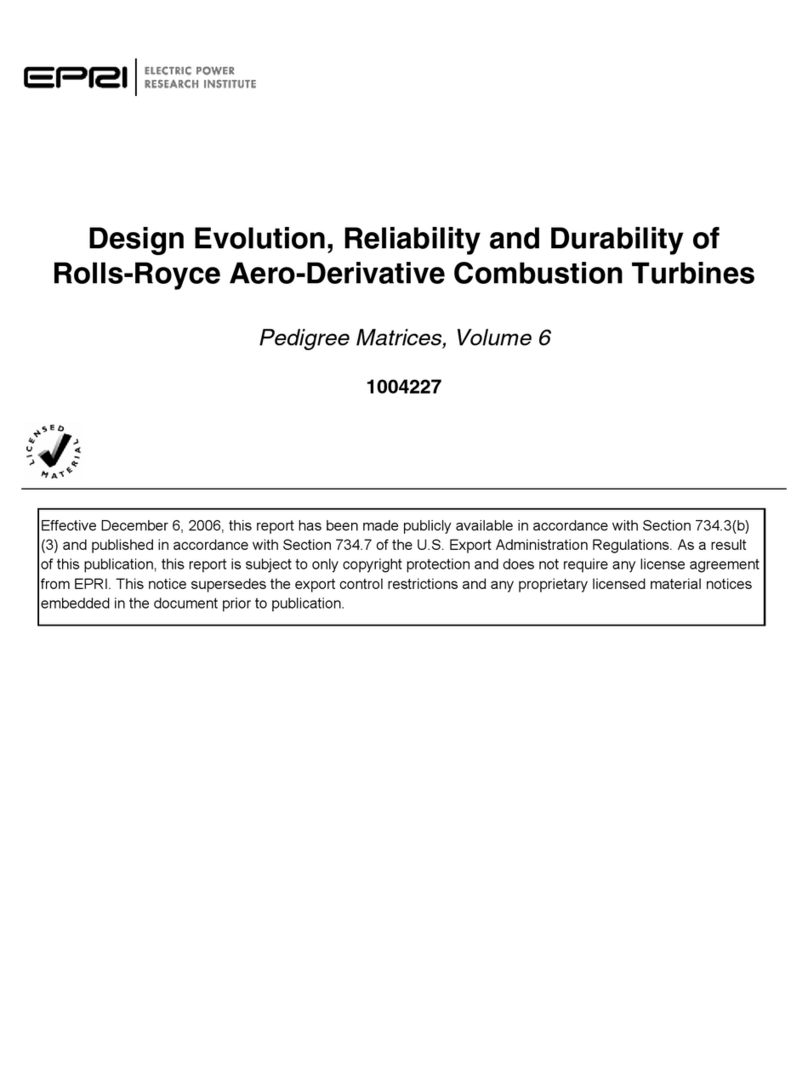
Rolls-Royce
Rolls-Royce 1004227 Technical manual

Rolls-Royce
Rolls-Royce T Series Instruction manual

Rolls-Royce
Rolls-Royce Bentley T Series Service manual

Rolls-Royce
Rolls-Royce Silver Cloud II Instruction manual
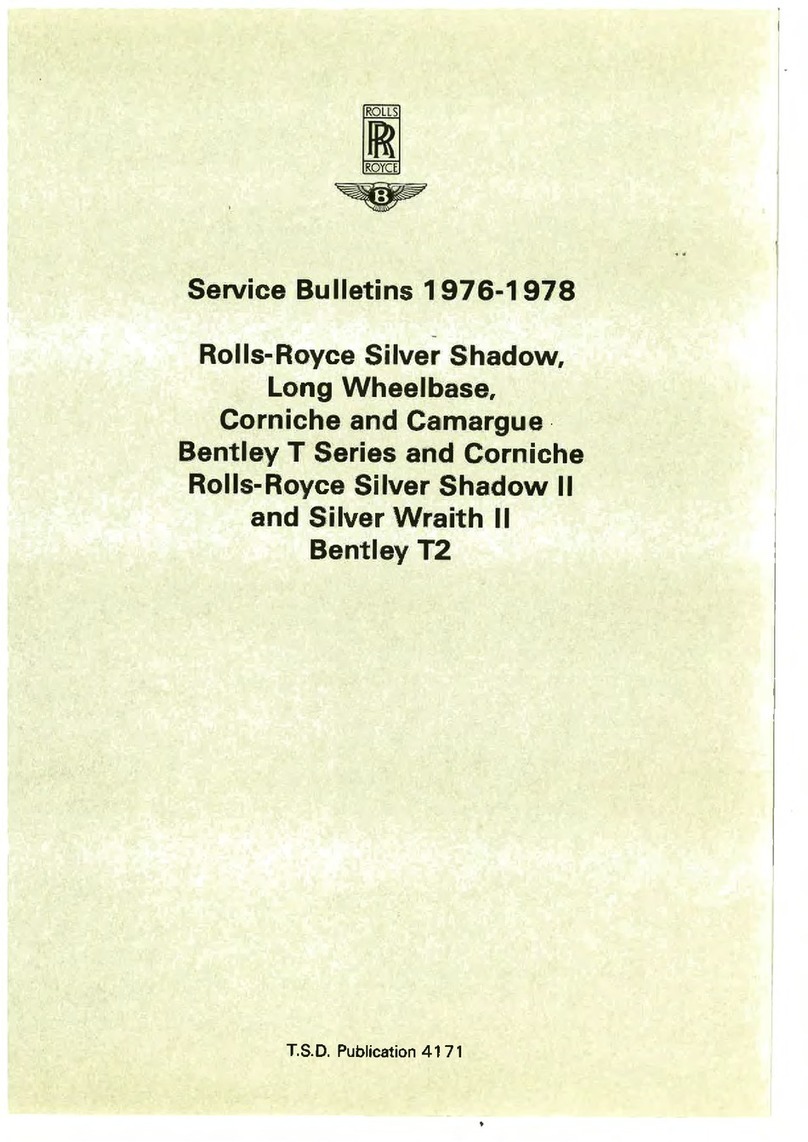
Rolls-Royce
Rolls-Royce Bentley T Series Reference manual
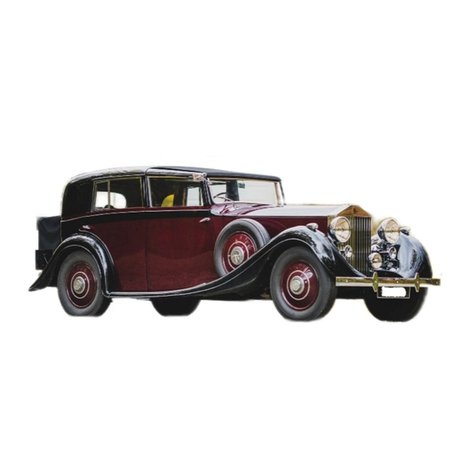
Rolls-Royce
Rolls-Royce 25-30 H.P User manual

Rolls-Royce
Rolls-Royce Silver Spur 1985 Service manual


